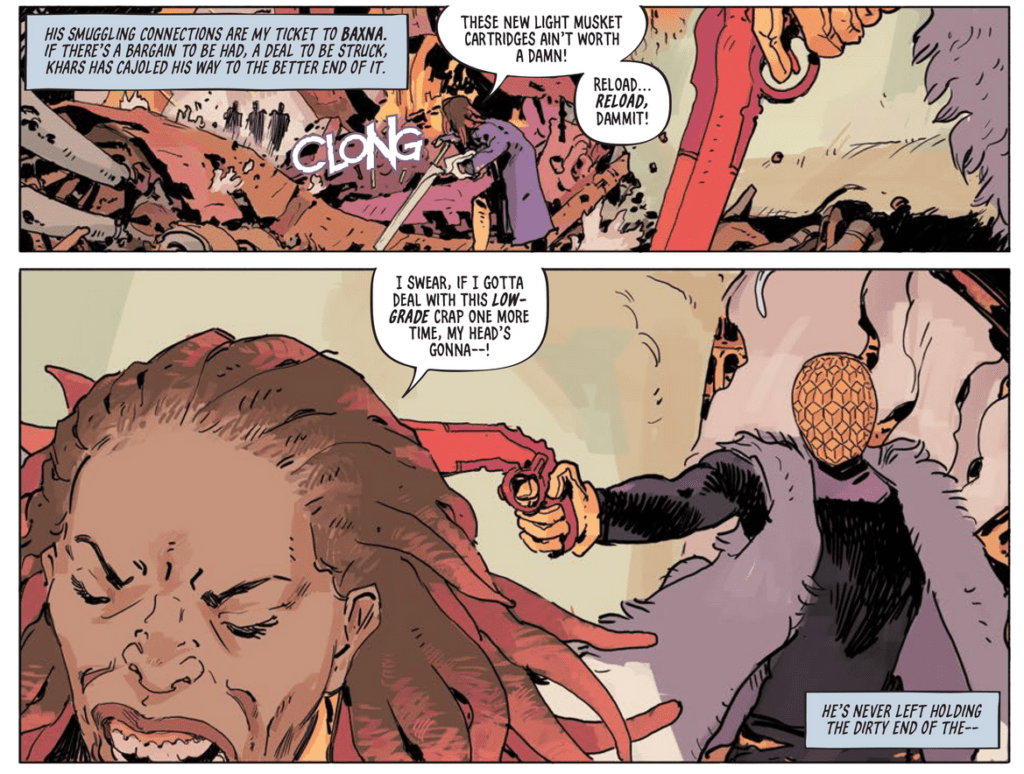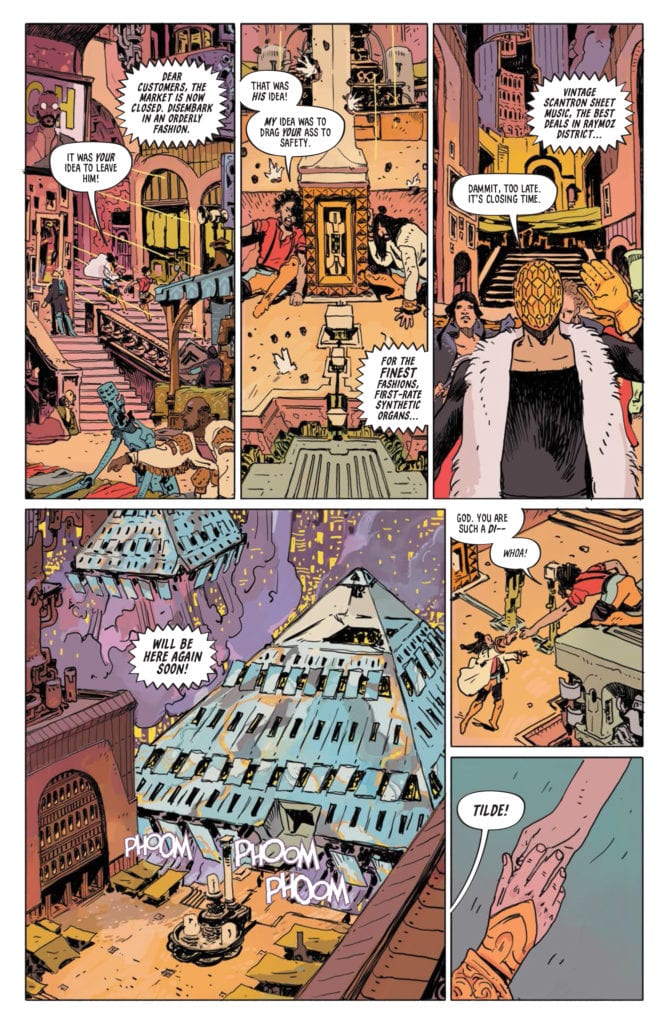Having three issues in a row be absolute gems of storytelling, and visual beauty is a feat to behold, however, the team behind Image Comics Tartarus #3 makes it look easy.
Tartarus #3 isn’t scheduled to be released until June 17th. That in mind, it’s been a while between the previous issues. Take a look at our reviews of issues one and two to refresh yourself. Or, if you haven’t picked them up, support your LCS and grab them!
TARTARUS #3 – STORY
After three issues of amazing storytelling, it’s hard to say anything that hasn’t been before. Nonetheless, one of the greatest things to note is writer Johnnie Christmas’ constant fantastic pacing. Tartarus can seem quite busy at times; even three issues in the plot has a lot to say. Yet, Christmas never wastes a page, even when it comes to ones that seem trivial. Each page matters for the story Christmas sets out to tell, and he makes sure the dialogue matters as well.

Christmas continues to trickle backgrounds, and new story beats throughout that fall into place organically. The way he is able to make the story flow ever so smoothly makes the heavy amounts of story and the dense world feel not so heavy. The world and characters of Tartarus feel complex with multiple layers throughout, yet the writing never makes you feel overwhelmed. At times some stories can feel so heavy with all the information that it’s a struggle to read. Nevertheless, this never occurs with Christmas’ writing, or how he progresses the plot.
THE DESIGN OF IT ALL
The designs of the characters and the landscapes seen in the previous issues have been remarkable. The same can be said of Tartarus #3 with Tilda and the remaining crew on the Tartarus colony. Much like the other planets/cities the series has visited, Jack T. Cole sets the design of this one apart. The colony is explained as “a deadly mining colony on an ocean planetoid at the ass-end of space.” This definition bodes well with the designs we’ve seen. It also appears to be a sort of hub that includes varying people. By looking at the vast array of different people and creatures, this seems to ring true. Not only that, but the cluttered buildings that are sometimes in shambles, yet has no breathing room between them shows overpopulation.
Cole’s background art leans heavily into this as well. Streets are packed with background characters as well as buildings that are so close they almost melt into each other. Yet another aspect of the planet that makes it feel like different cultures combined are Cole’s colors. Cole continues with the 80’s science fiction palette, yet different parts of the colony tend to change colors. One location favors browns while others revolve around blue, green, purple, among other colors. These changes of colors in locations never feel off, but they bring the backgrounds to life.

THE IMPACT OF LETTERS
Much like the rest of the team, letterer Jim Campbell continues to astound in the third issue. Aside from his usual ability to make sure nothing is covered, there are two other elements that really stand out. First are the sound effects. As important as sound effects can be, sometimes they are overdone and don’t match the tone. This isn’t a problem in Tartarus #3, as Campbell’s sound effects never feel too jarring or out of place. Nonetheless, the other amazing element Campbell uses sparingly, but to great effect.
During a scene when a character yells “Aaahhhgg!”, Campbell starts it off small, then grows during the “h” and back to normal with the “g.” Making it sort of look like “aaaHHHgg”. Although that may not seem like much, by making the size wave, he is able to give that much more emotion. Now you’ll read it with a higher emphasis in the middle, thus hitting that much harder. This little trick made a huge impact.
TARTARUS #3 CONCLUSION
Three issues in and Tartarus continues to astound with how great every element is. Having your first three issues feel this amazing is hard to do. Not only has the team crammed detail after detail throughout, but they make it feel as they’re never giving too much. That is one of Tartarus’ skills; it has an epic to tell, yet the pacing and world-building never feel too much. Instead, we are treated to a fantastically paced story that is oozing with an imagination that draws you in.

